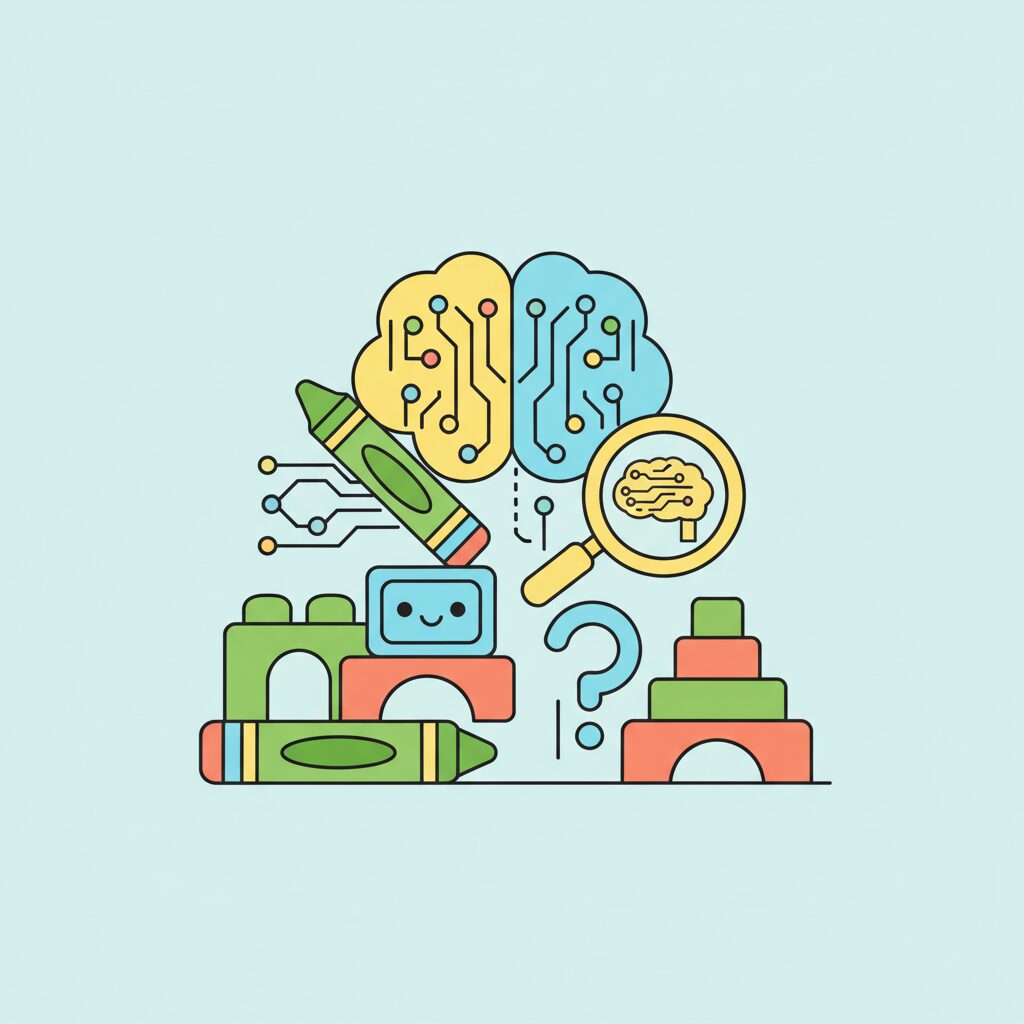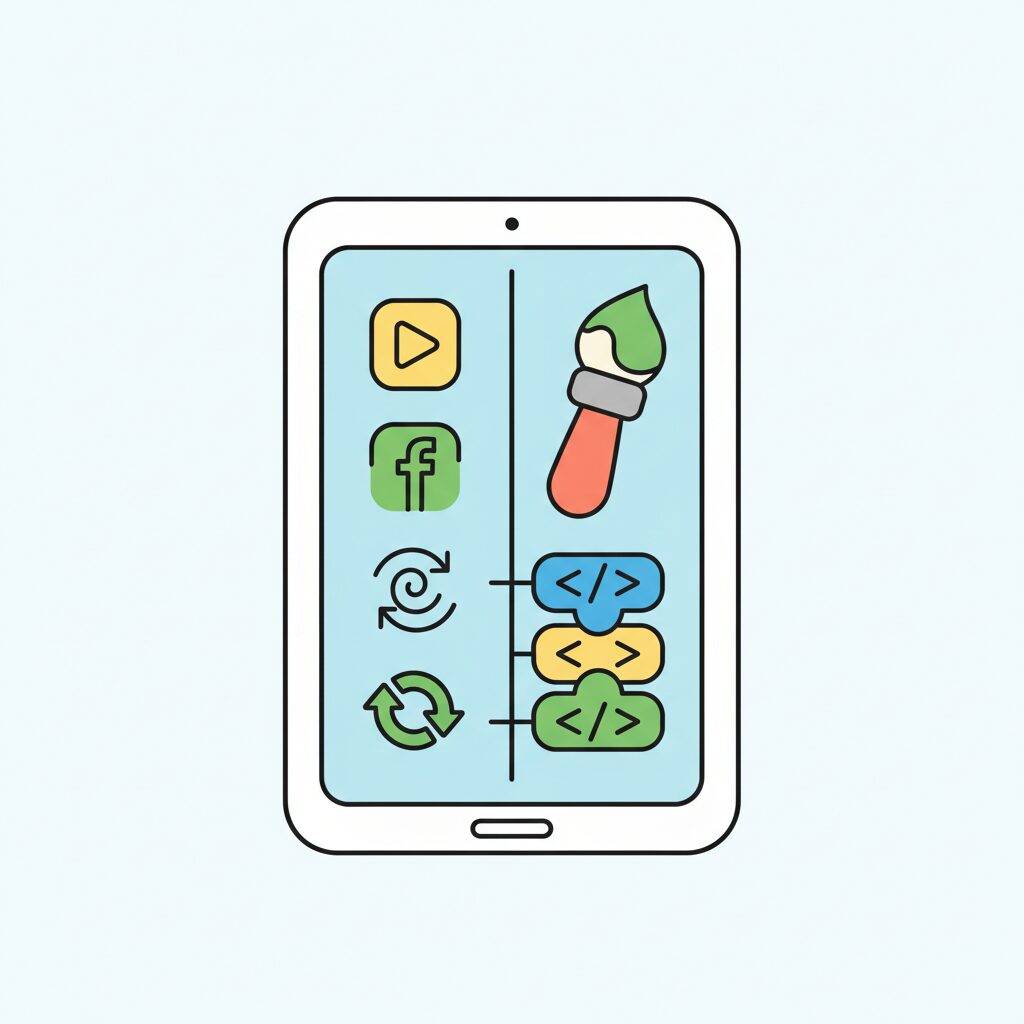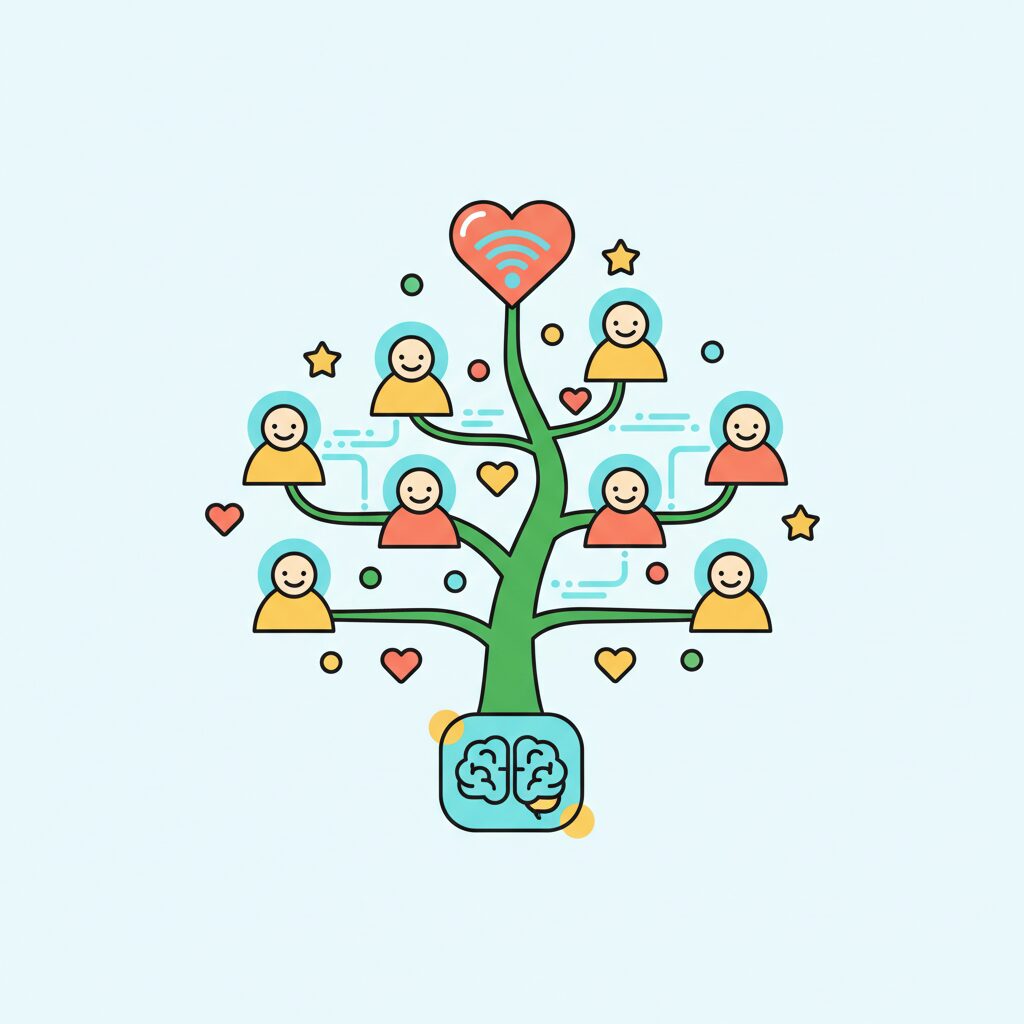
Ever watched your child puzzle out how to build a tower that won’t topple? That spark of determination—the moment they shift from ‘I wonder’ to ‘Let’s try’—feels electrifying. Today’s news about Walmart scaling agentic AI—the kind that doesn’t just chat but acts—hit close to home for parents raising kids in an AI world. Turns out, their ‘super agent’ WIBEY, designed to help developers solve problems autonomously, mirrors what we nurture in our kids daily: the jump from passive curiosity to empowered action. As gray skies linger outside, it’s the perfect nudge to think about how we guide little humans through a world where tools increasingly do things for us. What happens when tech transitions from answering questions to taking initiative? And crucially, how do we keep kids steering their own ships?
How Do We Move Kids From Passive Screens to Purposeful Doing?

Walmart’s WIBEY isn’t about spitting out answers—it’s a unified hub that interprets intent and routes tasks to the right tools. Think of it like a seasoned scout: ‘Hmm, you need help fixing this pipeline? Let me gather the right team.’ Think of it like switching from waiting to doing—total game-changer! Remember when screen time meant swiping through videos? Now, it’s less about consumption and more about creation. A seven-year-old might start with simple coding games where they instruct characters to solve mazes—not just watch them. Or imagine baking cookies together: instead of handing them a pre-mixed kit, ask, ‘What happens if we swap chocolate chips for raisins?’
It’s not about fancy tech. Last week, my daughter transformed sidewalk chalk into a ‘business’—selling ‘rainbow passes’ to neighborhood friends. No app needed, just pure initiative. This is the magic of raising action-taking kids: when they move from ‘Tell me a story’ to ‘Let me tell you one.’ Research shows hands-on creation (like building with clay or planting seeds) sparks deeper neural connections than passive viewing. Why not try swapping one screen session this week for a ‘build-it’ challenge? See how quickly imagination takes the wheel.
How Can We Set Guardrails That Grow With Our Kids?

Walmart stresses how their AI system ‘allows only models compliant with guidelines into production,’ using guardrails for safety without stifling innovation. Translation: trust with structure. As parents, we live this tension daily. Setting screen limits? Essential. But what if we frame it like Walmart’s approach—enabling exploration while anchoring it in responsibility? For a young child, guardrails aren’t just ‘no more tablets at 8 PM.’ They’re conversations like, ‘When we build forts, we use cushions so no one gets hurt. How can we make online play safe too?’
That overcast summer afternoon? Instead of defaulting to cartoons, we turned kitchen time into a ‘food science lab.’ Measuring flour became a lesson in precision; kneading dough taught patience. Guardrails here were natural: ‘We wash hands first’ or ‘spills become everyone’s cleanup.’ The goal isn’t perfection—it’s building context-aware judgment. Think of it as equipping kids with their own internal ‘WIBEY,’ helping them navigate choices in our AI-driven world. One question to ponder: How might ‘I need help’ moments become chances to guide kids toward solving problems themselves? Like troubleshooting a wobbly bike tire together—starting with ‘What do you think’s loose?’—it turns anxiety into agency.
How Can We Simplify Kids’ Digital Worlds to Foster Focus?

Walmart’s super agents consolidate 200+ fragmented tools into one intuitive interface. Brilliant! Because let’s face it—toddlers know how to swipe a phone, but focus is the real superpower. Kids drown in options: apps, games, videos. Our parenting win? Simplifying their world so curiosity isn’t buried under chaos. Think about playdates: instead of 10 different toys, try one bin of open-ended items (blocks, scarves, wooden shapes). Suddenly, collaboration trumps distraction. Or during homework time, use a ‘one-device zone’—laptops stay shut while they sketch ideas on paper first.
That gray-day energy? We channeled it into a backyard ‘obstacle course’—jumping logs, balancing on benches. No fancy gadgets, just clear rules: ‘Start here, finish there, and you design the path.’ It’s shocking how fast friction fades when the goal is tangible. As Walmart reimagines how teams ‘develop and deliver,’ we can reimagine family rhythms. What if after-school time had one anchor activity to unwind? A shared walk spotting birds, or setting the table together? Over time, these small unifications build resilience. They learn: Complexity can be tamed. Try it tonight at dinner—ask one ‘wonder question’ like, ‘If you could fix one thing in our home, what would it be?’ Watch priorities shift from scattered to focused.
How Do We Keep Human Connection at the Center of Tech-Enabled Parenting?

Walmart’s vision—’intelligent systems work alongside us’—is the parenting North Star in our AI world. Tech should amplify connection, not replace it. When my daughter drafts a story using a simple voice-to-text app, I sit beside her: ‘What if your hero met a dragon who’s afraid of glitter?’ It’s not about the tool; it’s about the shared spark. Agentic AI excels when it handles mundane tasks (like Walmart’s WIBEY fixing pipeline issues), freeing humans for meaningful work. For families? That means using tech to reclaim time for eye contact, laughter, and wonder.
Consider screen time as ‘energy restoration’—not the enemy. After a focused hour of drawing, an educational animation might recharge her creativity. But the magic blooms when the screen stops and the stories begin. Last weekend, we turned grocery planning into a game: ‘You’re the captain; choose 3 veggies for our adventure.’ Real stakes mean real joy—plain and simple. As summers warm up and clouds drift by, remember: our superpower is presence. Not monitoring every click, but being fully there when they say, ‘Look what I made!’ That’s where trust grows—not in perfection, but in the messy, glorious ‘try-again’ moments. So let’s end with a smile: How will you act on curiosity this week? Maybe it’s as simple as asking your child to teach you their favorite game. Suddenly, they’re the guide.
Source: Walmart embraces agentic AI with major ML platform upgrade and developer ‘super agent’, SiliconANGLE, 2025/08/29
